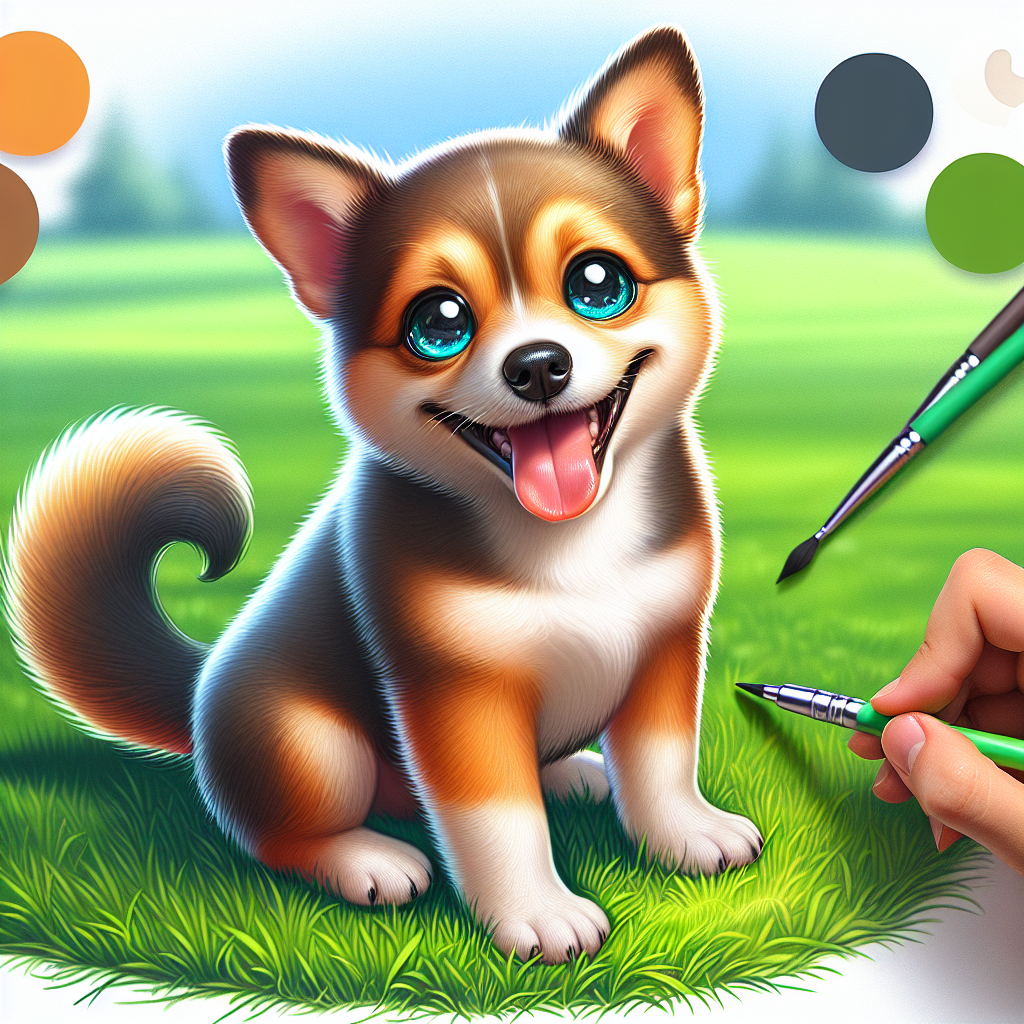Introduction to Flea Infestation in the Yard

Well, here we are, staring out into the wild, wild world of flea infestations in the yard. It’s quite something, isn’t it? You think your yard is your own little slice of heaven, but turns out it’s a flea haven. Flea infestation outside—sounds like a horror movie, doesn’t it? But let’s not get too dramatic. It’s just life, and sometimes life comes with fleas. Nobody invites them, they just show up. They sneak in, uninvited guests at your garden party, leaving behind itchy memories. Your yard—a place for barbecues and lazy Sunday mornings—can become the perfect flea hotspot. And these little buggers don’t just hang around for free; they bring their own special kind of chaos. Now, I’ve been in the pet game for over 20 years, seen dogs and their humans battle these pests more times than I can count.
Understanding the Flea Life Cycle
Fleas are like that annoying song that gets stuck in your head—they just keep going. The flea life cycle outdoor is a relentless circle. These critters start as eggs, move to larvae, then pupae, and finally, the adult flea that’s ready to bite. It’s a whole soap opera played out on your lawn. And it doesn’t take long—just a couple of weeks and those eggs hatch. Before you know it, you’ve got a whole flea circus right there in the grass. The yard becomes a revolving door of flea life stages, one after another, like a bad sitcom that never ends. You’d think they’d take a break in the winter, but nope, they’re just waiting for spring to come bouncing back. And here’s the kicker—those pupae can hang out, like tiny little time bombs, ready to spring to life when the time’s just right.
Identifying the Signs of Fleas in Your Yard
So, how do you know your yard’s become a flea-infested jungle? Well, keep an eye on your pets first. They’re like little flea detectors. You see them scratching more than usual? That’s a sign. But the grass can give you clues too—look for signs of fleas in grass. You might spot tiny specks hopping around. It’s like a flea carnival out there. And if you’re brave enough to get down on your hands and knees, you might see them for yourself. Trust me, once you see it, you can’t unsee it. Your yard isn’t just grass and flowers anymore—it’s a flea battleground.
The Impact of Fleas on Pets and Humans
Ah, the joys of sharing your life with fleas. They don’t just hang out in the yard, they like to spread the love. Fleas’ effect on pets is a real buzzkill. They leave your furry friends scratching like mad. Itching, irritation, and, in some cases, allergic reactions. It’s not just a pet problem, though. Yard flea problems can spill over to humans too. You might find yourself with itchy ankles, mysterious bites appearing overnight. Fleas aren’t picky—they’ll snack on anyone. And if you’ve got kids playing in the yard, well, they might bring a few extra guests inside. It’s like hosting a flea convention, and you didn’t even know you sent out invitations.
Why Your Yard is a Flea Haven
Why is your yard such a flea paradise? Well, it’s all about the environment. Warm, shady, and a bit damp? Congratulations, your yard’s a flea-friendly zone. Outdoor flea hotspots are usually where the grass is longer, and the sun doesn’t quite reach. Fleas love to hide out in those cozy spots, waiting for their next victim. It’s not that your yard’s trying to betray you—it just happens. You might have the best-looking lawn on the block, but if you’ve got the right conditions, you’ve got yourself a flea haven.
So, what’s a person to do? Well, keep your chin up. You’ve got this. Take a good, hard look at your yard. You can turn the tide in this battle. A little vigilance goes a long way. And hey, thanks for sticking this out with me. Here’s to us—fighting the good fight against those pesky fleas. Good luck, and may your yard be ever flea-free!
The Hidden Habitats: Where Fleas Lurk Outside
Ah, fleas. Those tiny, annoying creatures that seem to have a talent for evading detection. They’re not just in your living room carpet, sipping tea and laughing at your attempts to catch them. Nope, they have outdoor flea habitats too. Picture this: you’re out in your yard, trying to soak up some sun, and your ankle starts itching like it’s auditioning for a dance competition. That’s right—those sneaky fleas are out there, hiding in the grass, under leaves, even in your flower beds. They love damp, shady spots. Basically, if it’s a place you’d kick back with a book on a hot day, they’re probably there, plotting their next move. Flea infestation in yard is more common than you’d think.
Now, I’ve been in the pet biz for over 20 years, so I’ve seen quite a few of these little parties. Trust me, understanding where fleas chill outside helps when you’re planning your attack. You don’t need a degree in flea psychology, but knowing their hangouts gives you the upper hand. So, keep your eyes peeled for those shady, moist hangouts. Fleas are sneaky, but you’re smarter.
Battle Gear: Essential Tools for Flea Control
Alright, let’s talk shop. You might think you need a high-tech gadget that looks like it came out of a sci-fi movie to win this war. But here’s a little secret—sometimes, the simple stuff does the trick. Tools for flea control don’t have to break the bank. One of my go-tos is a good ol’ flea comb. Costs you about the same as a fancy cup of coffee. You just comb through your pet’s fur and, voila, you’ve got a flea-catching device in your hand.
Then there’s the yard. Yep, you can’t ignore the battlefield outside. Effective outdoor flea solutions include things like diatomaceous earth. It sounds fancy but it’s just a type of powder that’s rough on fleas. Sprinkle it around your yard, and it’ll help keep those fleas at bay. Doesn’t cost much either—your wallet will thank you. And don’t forget a good lawn mower. Keeping the grass short makes it less comfy for fleas to hang out.
Natural Warriors: Let Nature Fight Fleas
Now, let’s get a little earthy. I’m all for letting Mother Nature lend a hand. She’s got a few tricks up her sleeve. Natural flea remedies can be a game-changer. Take nematodes, for instance. Little roundworms that you can release in your yard. They’re like microscopic warriors taking out fleas before they even reach your pet. It’s like having your own tiny army, and they don’t even ask for a paycheck.
Then there are certain plants that can help keep fleas away. Lavender and rosemary, to name a couple. Plant some of these around the yard, and you’ve got yourself a natural flea repellent. Plus, your yard smells like a spa. It’s a win-win. You get some flea protection, and your yard gets a makeover. Pet-safe flea prevention is not just a dream—it’s doable with a little help from nature.
The Cost of Inaction: What Happens if You Ignore Fleas
So, what if you just decide to throw caution to the wind and do nothing? Well, let’s just say that’s not a party you want to RSVP to. The consequences of ignoring flea infestations can be harsh. Fleas are not just a nuisance. They’re troublemakers. They carry diseases, and they can cause allergic reactions in pets. Ignoring them is like leaving the door open for a house full of uninvited guests.
I’ve seen it happen—pets getting sick, homes becoming flea motels. It’s not a pretty sight. And the longer you wait, the worse it gets. Your pets deserve better. So, don’t let those little pests take over. A little action now saves a whole lot of headache later.
The Flea-Free Zone: Creating a Safe Haven for Your Pets
Finally, let’s chat about creating that flea-free zone—a sanctuary for your furry pals. It’s not a pipe dream. You can make it happen. Start by treating your yard, because that’s where the battle begins. Use pet-safe flea prevention methods—those nematodes and flea-repelling plants we talked about.
Inside, keep it clean. Vacuum regularly and wash pet bedding often. A clean home is a less inviting home for fleas. And don’t forget regular check-ups with the vet. They can help you keep on top of flea prevention.
So, there you have it. Fleas might be tiny, but they’re no match for you. With a little know-how and some elbow grease, you can keep them at bay. Here’s to you and your four-legged pals living your best flea-free life. Thanks for sticking around—go get ‘em, tiger!
Strange Flea Behaviors You’d Never Guess
You ever watch fleas hop around like they’ve had one too many cups of coffee? These little jumpers are full of surprises. Most folks think they know fleas, but let me tell you, there’s more to them than meets the eye. Flea behavior myths are everywhere. People say fleas only live on pets, but that’s not true. They’re crafty. They’ll set up shop right outside your door. Fleas are nature’s little gymnasts, launching themselves up to 150 times their body length. Imagine if we could do that! They’re strategic, too. Fleas can lie low in your garden, waiting for a warm body to come by.
I once heard a story about a guy who thought he had it all figured out. He found out the hard way that fleas can survive for months without a meal. His backyard became their playground. Fleas have a knack for survival. They hide in tall grass, under leaves, and between the cracks in the pavement. They’re like the ninjas of the insect world. Fleas also have a scent for carbon dioxide, which means they know when you’re around. It’s like they’ve got a sixth sense. So, next time you see your dog scratching, remember—those fleas might not just be hitching a ride. They’ve got plans.
Natural Remedies to Keep Fleas at Bay
There’s no magic bullet for fleas, but nature’s got your back. Home flea remedies are where it’s at. You don’t need to spend a fortune on chemicals. Sometimes the best solutions are right under your nose. Take vinegar, for instance. A simple mix of apple cider vinegar and water can help keep fleas at arm’s length. Fleas hate the smell. It’s like garlic to a vampire.
Then there’s diatomaceous earth. This stuff’s like kryptonite for fleas. Sprinkle it in your garden, and watch them run for the hills. Just be careful not to breathe it in. It works by drying out their little bodies. There’s also the trusty lemon juice spray. A few squirts of that, and fleas will think twice about coming near. It’s like laying out a welcome mat that says, “Not today, fleas.”
I’ve seen folks swear by planting flea-repellent plants, like lavender and rosemary. Not only do they keep fleas away, but they smell divine. And, hey, they make your garden look nice, too. A win-win. So, if you’re battling a flea infestation outside, remember that Mother Nature’s got some tricks up her sleeve. Give these remedies a shot. You might be surprised at how well they work.
The Cost of Ignoring a Flea Infestation
Ignoring a flea infestation is like ignoring a leaky roof—it’ll cost you. The cost of flea infestation neglect can hit you right where it hurts—your wallet. I knew a neighbor once who thought a few fleas were no big deal. Fast forward a few months, and he was knee-deep in vet bills. His dog got flea dermatitis, and he ended up replacing all the carpets. Ouch.
Fleas are more than just itchy pests. They carry diseases. Ever heard of the bubonic plague? Yeah, fleas had a hand in that. I’m not saying you’ll get the plague, but fleas can cause tapeworms and other nasties. And don’t even get me started on the damage they do to your sanity. Sleepless nights, endless scratching—it’s enough to drive anyone up the wall.
Prevention is cheaper than treatment, folks. Trust me on this one. The cost of dealing with an infestation can spiral out of control. You think it won’t happen to you, but fleas are sneaky. They multiply faster than rabbits. So do yourself a favor—nip it in the bud before it gets out of hand.
Flea Prevention: A Year-Round Commitment
Fleas don’t care about seasons. They’re active all year round, which means year-round flea prevention is a must. I know, I know, it sounds like a hassle. But it’s like brushing your teeth—skip it, and you’re in for trouble. Fleas thrive in warm, humid weather, but they can survive in colder months, too. They’re resilient little critters.
Flea control strategies should be part of your routine. Regularly mow your lawn, trim bushes, and keep your garden free of debris. Fleas love to hide in shady, moist areas. Don’t give them the chance. You wouldn’t leave food out for a stray cat, would you? Same idea.
Some folks use nematodes—tiny worms that feast on fleas. Sounds gross, but they’re a natural solution. And don’t forget about your pets. Regular flea treatments are a must. A flea collar, topical solution, or oral medication can do wonders. Remember, prevention is better than cure. Fleas won’t wait for an invitation, so stay ahead of the game. Make it a habit, and you’ll thank yourself later.
Wrapping Up Our Flea Tale: Your Next Steps
Well, we’ve covered a lot of ground, haven’t we? Flea behavior, natural remedies, the cost of ignoring them, and year-round strategies. It’s been a bit of a wild ride, but hey, that’s what life’s all about, right? Now that you’re armed with all this knowledge, it’s time to put it to use. Flea infestation solutions are within reach.
Start by taking a good look around your yard. Where are the hiding spots? Tackle them head-on. You’ve got this. And don’t forget—when it comes to fleas, you’re the one in charge. They might be small, but you’ve got the upper hand.
Thanks for sticking around for the ride. You’ve got this, and remember—when it comes to fleas, you’re the boss. Cheers!
Quick Takeaways:
Alright, folks, let’s break down the nitty-gritty of dealing with a flea infestation outside. First off, fleas love hanging out in your yard like it’s their personal paradise. Think of your yard as a flea hotel with prime real estate in shady spots and tall grass. Those are the outdoor flea hotspots where they thrive. The flea life cycle outdoors is a fascinating yet frustrating dance between eggs, larvae, pupae, and adult fleas. They’re relentless, multiplying like rabbits if you let them.
You might notice signs of fleas in the grass, like your pets scratching more than usual after a romp outside. That’s your cue to act. Fleas have a nasty habit of hitching rides on your beloved pets, causing them discomfort and potential harm. Fleas’ effect on pets isn’t just about the itching; we’re talking allergies and even tapeworms—yikes!
Ignoring a flea infestation in your yard? Big mistake. It’s not just your pets at risk—humans can get caught in the crossfire too. Flea issues for humans can include itchy bites and even disease transmission.
Now, you might think you need some fancy tools for flea control, but hold your horses. There are effective outdoor flea solutions that don’t break the bank. Natural flea remedies, like diatomaceous earth or nematodes, can be your best friends. They’re eco-friendly and pet-safe, keeping your yard flea-free without harsh chemicals.
So, don’t let yard flea problems take over your outdoor space. With a little effort, you can reclaim your yard and make it a haven for your pets, minus the fleas. Keep these takeaways in mind, and you’ll be ready to tackle those pesky jumpers head-on.
FAQs:
1.
How do I identify a flea infestation outside?
Finding signs of fleas in grass is your first clue. Watch your pets for excessive scratching after being outside. Fleas leave behind flea dirt—a dirt-like substance that’s actually flea feces. If you see small, black specks on your pet or in their bedding, you’re likely dealing with fleas.
2.
What are the common outdoor flea hotspots?
Fleas love hiding in shady, humid areas. Outdoor flea habitats often include tall grass, leaf piles, and under decks or porches. These spots provide the perfect environment for the flea life cycle outdoor to thrive. Keep these areas tidy to reduce their appeal to fleas.
3.
Can fleas from the yard affect humans?
Absolutely, flea issues for humans are real. Fleas from a yard infestation can jump onto humans, leading to itchy bites and even allergic reactions. In rare cases, fleas can transmit diseases. Keeping a clean yard and controlling fleas promptly helps protect you and your family.
4.
What are some natural flea remedies for my yard?
There are several pet-safe flea prevention methods you can use. Diatomaceous earth is a natural powder that dehydrates fleas, while beneficial nematodes are microscopic worms that feast on flea larvae. Both are effective outdoor flea solutions that won’t harm your pets or the environment.
5.
What are the consequences of ignoring a flea infestation in the yard?
Ignoring yard flea problems can lead to a full-blown infestation that’s harder to control. Fleas will continue to breed and spread, causing discomfort to pets and humans alike. Long-term neglect can result in increased vet bills and pest control costs. It’s best to nip flea infestations in the bud before they escalate.
Conclusion:
There you have it, folks. Flea infestations outside are no joke. They can turn your peaceful yard into a battleground, with your pets and even yourself in the crosshairs. But don’t worry, you’re not powerless against these tiny invaders. With a little know-how and the right tools, you can reclaim your yard.
Remember, keeping your outdoor space tidy and using effective flea control methods are key. Whether you choose natural flea remedies or more conventional approaches, the goal is the same—a flea-free sanctuary for your pets and your family.
So, as you go about tackling those pesky critters, keep your chin up. You’ve got the knowledge and the tools to win this battle. Cheers to a flea-free yard and happy pets! Thanks for hanging out with me on this flea-fighting journey. You’ve got this!
References:
1. [How to Treat Fleas in the Yard – Scotts](https://scotts.com/en-us/how-to/how-to-treat-fleas-in-the-yard.html)
2. [How to Get Rid of Fleas – Healthline](https://www.healthline.com/health/healthy-home-guide/how-to-get-rid-of-fleas)
3. [How to Get Rid of Fleas in Your Yard – Lawn Love](https://lawnlove.com/blog/how-to-get-rid-of-fleas-in-your-yard/)
4. [How to Kill Fleas In Your Yard – PetMD](https://www.petmd.com/dog/general-health/how-to-get-rid-of-fleas-in-the-yard)
5. [How to Get Rid of Fleas in the Yard – PetBucket](https://www.petbucket.com/c/4585059/1/how-to-get-rid-of-fleas-in-the-yard.html)
Our solution eradicates fleas on contact without harmful chemicals, ensuring a safe environment for your pets and family. Easy to use and highly effective, SayByeBugs helps you maintain a flea-free home. Learn more and order today at SayByeBugs.com
Our solution eradicates fleas on contact without harmful chemicals, ensuring a safe environment for your pets and family. Easy to use and highly effective, SayByeBugs helps you maintain a flea-free home. Learn more and order today at SayByeBugs.com










